
Few shotgun sports are as engaging, varied, and subjective as sporting clays. While trap and skeet reward consistency in the face of familiar target presentations, sporting clays requires a certain degree of creativity. However, if your weekly leisurely walk in the woods around the local sporting clays course is looking to take a turn towards the competitive side, these five basic tips can help you move to casual clay player to crushing them with impunity.
A good shot needs a great foundation.
Sporting clays stations typically consist of a 4-foot wide doorframe-like station, or stand. For comparison's sake, the average male shoulder width is typically around 18 inches, meaning there's a full 30 inches of adjustment to be had in shifting from left to right within the shooting stand. And while that may not sound like much, it can be the crucial difference between getting that much-needed extra second on target, and missing. However, due to our natural propensity to aim for the middle of most doorframe-like structures (a trait oftentimes hilariously waylaid by our friends at Molson-Coors), too many sporting clays shooters simply walk up to the stand and blast away without paying attention to either their stance or placement.
Of those two foundation skills, the correct placement is frequently the easiest one to deduce: simply call for a sighting target, figure out the point in its flight in which you would like to shoot it, and sidle over to whichever side makes this easiest. For example, if the target is being thrown at relatively shallow angle across the stand from left to right, shifting over to the extreme left side of the stand (and thus closer to the location from which the target is thrown) can help cut down on the angle even farther, thus expanding the potential breaking zone. If neither side presents any significant increase in the ability to put lead on the target, consider which location allows for the most unimpeded vision of the target. After all, the longer you can actually see the target, the longer you have to break it.
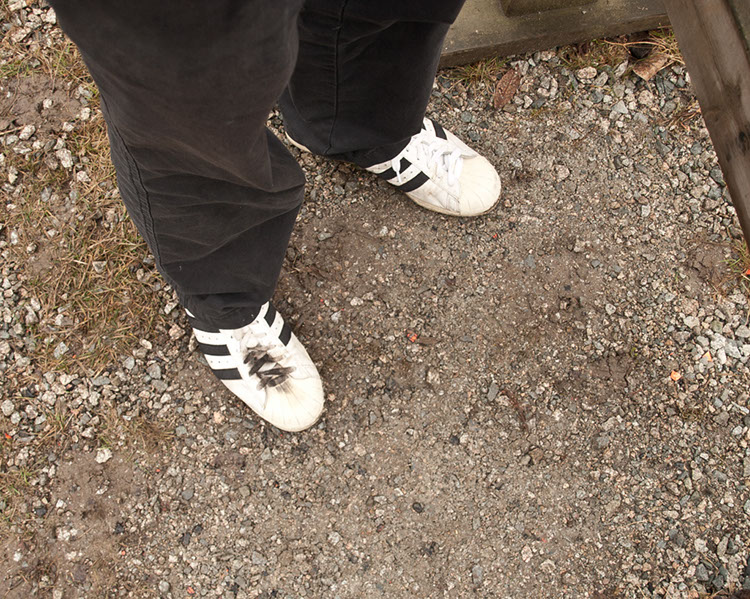
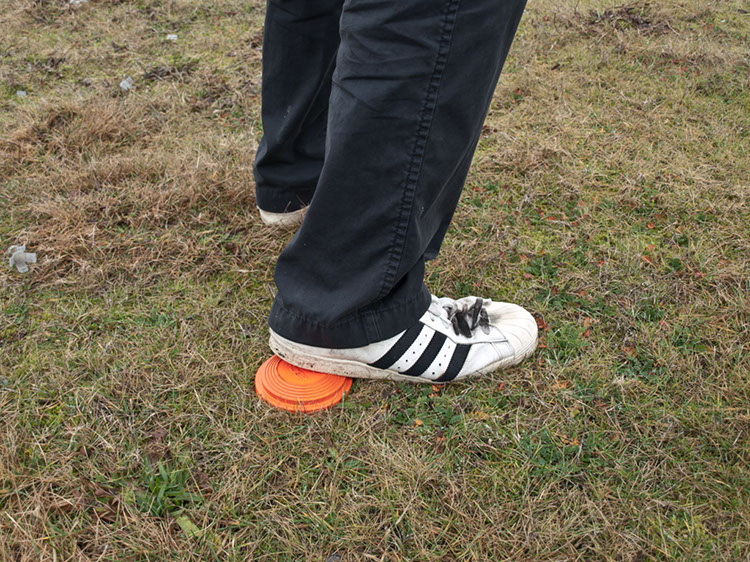
Cuddling the comb leads to premature lead ejection.
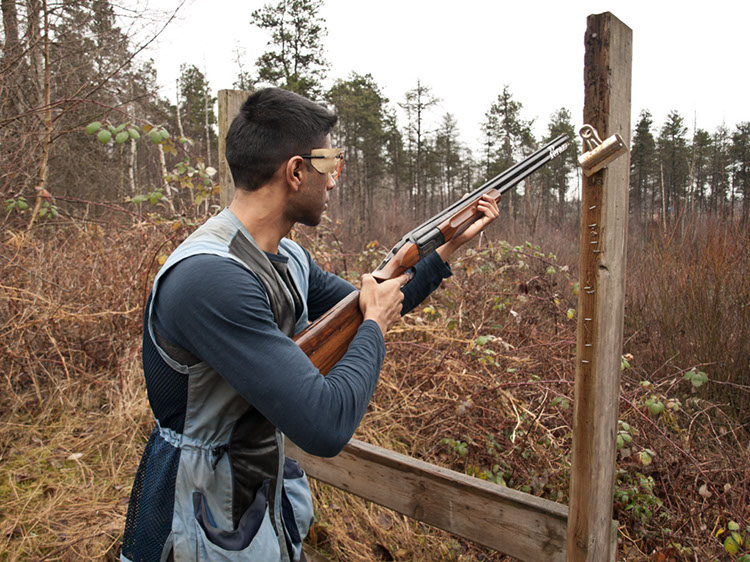
So, instead of mounting the gun and then calling for the bird with the gun in a low ready position (with the muzzle up and the butt hovering somewhere between your hip and elbow), or with a relaxed mount (with the gun loosely held on your shoulder, but your head upright and off the comb). This will allow you to move your head and torso around freely, and allows you to pro-actively look for the target as early as possible, rather than mounting the gun at where you think a target will appear and waiting for it to come into your field of vision. Also, by starting from a low gun or relaxed position, you can actually begin your swing before you've even mounted the gun. For most, this naturally happens without any thought, as your head and torso turn to track the target and the hands automatically begin swinging the gun barrels to bear on target. By the time the gun is brought up to the shoulder, the eyes, head, shoulders, and torso and gun are already moving in concert with the target. Overall, it encourages a much more natural shooting solution, and really drives home the manner by which shotguns should be "pointed" rather than aimed.
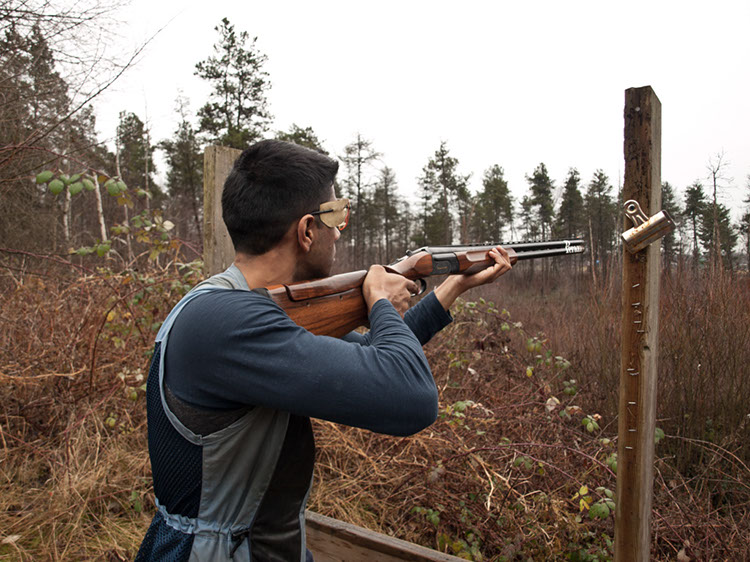
Until swinging onto a target with the gun starting in a low ready or relaxed position becomes second nature, the best way to ensure a successful mount and shot is to call for a sighting target and take note of two positions: that in which the target transforms from an orange blur to a clearly defined clay pigeon (conversely, think of this as the first place in which you can clearly make out the target's leading edge), and the position in which you plan to shoot the target, also known as the break point. Ensure your stance is correctly oriented towards the break point, and mount the gun in that direction. Then, leaving the gun mounted, wind your torso and the gun back to the position at which the clay becomes clearly visible. Once there, bring the gun down or relax your head position. Then, continue to turn in the direction the target is thrown from in order to provide the best view of its flight path, and call for the target.
It's chess, not checkers.
By now you will have noticed that a large part of a successful sporting clays shoot relies on recognizing certain things about a given target presentation, and acting accordingly. Unlike trap, or skeet, sporting clays targets can come from any number of directions, and can even consist of various sizes and shapes of actual clay targets. Taking a second to watch the sighting targets, and ponder the best manner in which to go about breaking them is always going to net you more points on your score card than simply stepping into the stand and blasting away. And while there's obviously no prescribed plan for each and every one of the innumerable target presentations and combinations you may be faced with, there are a few tips that can be adapted to a wide variety of them.
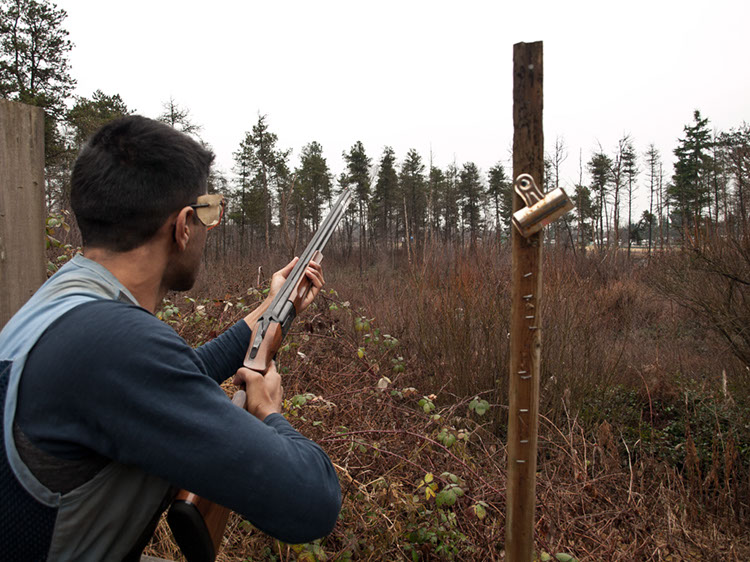
Bring the gun into the low ready position, and clock the gun position back to the first place where you can see the target as a clearly defined disc.
The first, and perhaps most important thing for the budding sporting clays shooter to consider when planning their shot is that manner in which the targets will predict their swing. In other words, plan to shoot the targets in such an order that your swing is as smooth and uninterrupted as possible. This is hugely important when shooting targets thrown as true pairs. In such situations, ignore the natural reaction to shoot the leading target, and instead swing onto the rearmost target. This allows one to break both targets without stopping the swing or changing direction. Simply break the rear target, accelerate the swing slightly to bring the muzzles over to the leading target, and fire again. Conversely, if two targets are thrown at differing elevations (such as the case of a "fur and feather," rabbit and clay pigeon station), engage the lower target first and allow the recoil of the gun to kick the muzzles up towards the second target. Remember, the goal is to plan out your shots in such a manner that they can be taken in the smoothest and most fluid manner.
Another thing that can help plan out your shots is to consider the muzzle movement required. In many cases (especially those with report pairs or following pairs) one can break one target either earlier or later in order to minimize the amount of movement required by the gun barrels. For example, in the case of an opposing crossing pair on report, shooting the first target late (when it's nearest the launching point of the second target) will ensure that the second target is thrown just ahead of the muzzle's position, meaning one can then get a nice clean swing across it without requiring too much movement. Conversely, if the first target is shot early, the gun needs to traverse a much longer distance before it can pick up the second target. That in turn leaves the shooter feeling rushed, and it doesn't take long before one is racing from target to target just to try and get a shot off. Limit your movement to the absolute minimum, and you'll stay relaxed and have a higher score to boot.
It's not the gun that misses... but it can help you hit.
Now this one is tricky. It's an easy thing, to blame one's equipment, and heading to the local gun shop to rectify the matter of missed birds with a serious helping of cash is not going to get you anything but a smaller bank balance and a bruised ego. However, all that being said, there are a few areas in which taking a good hard look at your equipment can help you break more birds.
The first of such areas is your ammunition selection. We've all heard it before; that shotgun ammunition is "pretty much all the same," so you should just buy the cheapest flats you can. However, consider this: when you buy a box of rifle shells, you typically get to choose from at most three or four bullet weights, all of which operate at around the same pressure with slight velocity variations depending on the ammunition components. By comparison, sporting shotgun ammunition can be had in a few different projectile sizes (7.5, 8, and 9 shot, typically), a myriad of load weights, with velocities than can vary up to almost 25 percent. Add in the differences in pattern and shot string produced by the various wads available, and you end up with an almost limitless variety of ammunition, all designed to produce a different effect.
Which is precisely why many successful sporting clays shooters augment their ammunition supply with at least a few rounds of something different. While promo loads may remain the highest volume of ammunition shot on any given weekend at a sporting clays course, there's usually a station or two where loading up a faster nitro or handicap load can prove quite helpful at extending the break point of a far-off or fast second target, giving you a bit more time to get on it and the mental confidence that comes from knowing you'll deliver enough lead to get a break. And if you're shooting a gun with a fixed choke, patterning a few different loads and carrying those that provided the widest variety of pattern sizes can serve as a decent stand-in for swapping chokes.
Which brings us to the next thing to consider when it comes to selecting your sporting clays equipment, and perhaps the most contentious: choke selection. While plenty of shooters have great success swapping chokes for damned near each and every station, most intermediate level shooters are better served by restricting their choke selection to the basic staples: a light modified or modified, and if shooting a double gun, either of those over an improved cylinder. Why? Well, although not optimizing your choke selection for a given target presentation may be conceding to compromise, it also allows for a greater degree of consistency. And until the foundation skills of a consistent mount, a solid stance and an ability to see the target properly have been accounted for, introducing another variable by way of changing chokes and thus patterns is going to slow one's ascent of the learning curve. And since those specific chokes are capable of throwing up good patterns everywhere from 25 to 50 yards, that combination of chokes should cover the majority of sporting targets.
Fur and feathers, neither is as fast as you think!
If there are two targets that people lose a lot of points on, it's the elusive springing teal, and the even-more-nefarious, groan inducing ground dwelling the rabbit. By far the most unique targets on a sporting clays course, these two targets are usually a huge departure from what normal shotgun sports enthusiasts are used to shooting at, and as such require an almost complete departure from the usual techniques employed.
With teals; targets which are thrown nearly vertically, the problem is often one of velocity. Because of their gravity-defying trajectory, these clays usually leave the ground at a very high speed, but slow extremely rapidly as well. This creates a lot of stress on the part of the shooter, as one typically watches the speedy teal leave the ground and feels pressured to hit the fast-flying target quickly, rather than waiting for it slow down. As a result, in attempting to track the target too quickly, the muzzles are accelerated upwards to try and catch up to the teal at the same time as the teal itself is rapidly slowing down. Thus, the gun barrels sweep past the target too quickly, and the shot misses.
Instead, try to visualize shooting the target nearer to its zenith, right before it stops mid-air. Relax, remember to keep the shooting pace slow, and bring the gun to the bear as the teal is between 1/2 and 2/3 of the way up. By then, the target's rising no quicker than a standard trap target, and should be easy to dust. Also, by choosing the shoot closer to the apex of the target's flight, you can usually minimize the amount of muzzle movement required to get on the second teal target, if they're being thrown as a pair.
The problem with rabbits is a similar issue of mental buggery. Due to their close proximity to the ground, and thus a solid background, they always appear to be travelling faster than they are. Just like a Cessna aircraft cruising at 300 kilometres per hour against a blue sky looks to be travelling as a snail's pace compared to a passing motorists doing a relatively paltry 50 kph, the rabbit always looks to be moving faster than any target on the course, when in reality it's usually one of the slowest. As a result, the muzzles are moving way too fast, and the eyes are looking for an entirely unnecessary amount of lead (as in, distance required ahead of the target to score a hit, not the base metal) and the shot throws up a plume of dirt a few feet ahead off the merrily bouncing target. Profanity ensues.
Instead, just like with the teal, the first step is to slow down and remember the appropriate shooting pace. Then, force yourself to look at the dead centre of the target, rather than allowing your eyes to look forward towards the lead one expects to require (often mistakenly!). This will reduce the likelihood of being fooled into shooting ahead of the target. Also, by focusing on the middle of the disc you allow your eyes the greatest amount of buffer around the focus point without losing track of the target, which will have the added effect of making the target appear to bounce less.